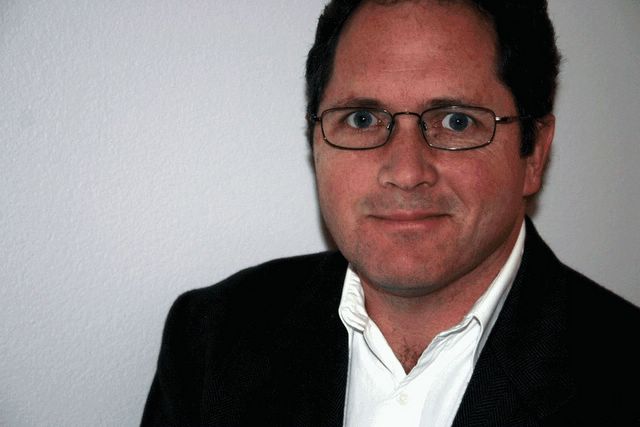Monday, August 24, 2015
Thursday, April 08, 2010
Wednesday, January 31, 2007
This blog has moved
Please visit us, and thank you Blogger.
Tags: medtech
Tuesday, January 09, 2007
Amniotic stem cells good, but not embryonic replacement
Quick to pounce on and deflate the balloon of embryonic stem cells as the only solution, some opponents of embryonic stem cell research (e.g., Richard Doerflinger of the U.S. Conference of Catholic Bishops, who notes,"This is wonderful news," for offering the benefits of stem cells without destroying embryos). They have a valid point, but one that is limited by the fact that no stem cell type is likely to be perfect for all applications and that in reality a continuum of stem cell types exists, with a comparable spectrum of advantages. George Daley of Harvard, notes that amniotic stem cells "are not a replacement for embryonic stem cells."
As Charles Darwin said, "a scientific man ought to have no wishes, no affections, -- a mere heart of stone." The science of determining the clinical application of different stem cell types needs to be carried out in a way that is less fraught with hope and expectation of specific outcomes for or against the value of embryonic stem cells for specific applications. The field remains characterized more by wishes and affections than science.
Tags: medtech, embryonic, stem-cells
Tuesday, January 02, 2007
Medtech Startups: Stealth, Location, and Platform Tech
In the December 2006 issue of MedMarkets, I note in my MedMarket Outlook column the common tendencies in the formation of medical technology startups in 2006. It should come as no surprise that central to many (though certainly not all) were the premises of stealth (staying under the radar), location (where are startups concentrated, as if it should be any surprise), and platform technologies, among others.
Here, for reference (or late Christmas present), are the companies identified in the December issue.
| Company | Principal(s) | Location | Product/Technology | Founded |
| Carticept Medical, Inc. | (Domain Associates, New Enterprise Associates) | Alpharetta, GA | Development and sales of therapeutically related medical devices | 2005 |
| Forcept, Inc. | John Maroney | Menlo Park, CA | Assisted cautery/cutting systems for performing transvaginal hysterectomy | 2005 |
| Internal Fixation Systems, Inc. | Steve Hernandez | Medley, FL | Orthopedic implants (e.g., bone screws) | 2006 |
| I-Therapeutix, Inc. | William H. Ransone II | Waltham, MA | Hydrogel sealant for use in ophthalmic surgery | 2006 |
| iCardiac Technologies, Inc. | Mikael Totterman, CEO | Rochester, NY | ECG-based cardiac diagnostics and medical devices | 2006 |
| NBI Development, Inc. | Undisclosed | Chicago, IL | Spinal neuromodulation devices | 2006 |
| Optmed, LLC | Alain Klapholz | New York, NY | Developing "innovative medical technologies" | 2006 |
| Safe Surgery Technologies LLC | David Michelson | Cheyenne, WY | Capsulotomy cutting device | 2006 |
| TriReme Medical, Inc. | Eitan Constantino | Pleasanton, CA | Apparatus and methods for delivering prostheses to luminal bifurcations | 2005 |
| Vertebral Technologies, Inc. | Jeffrey Felt, CEO | Minnetonka, MN | Biocompatible polymers for joint restoration in the spine | 2005 |
Carticept Medical, Inc. (Alpharetta, GA; http://carticept.com [under construction])
Forcept, Inc. (Menlo Park, CA; no URL)
Internal Fixation Systems, Inc. (Medley, FL; no URL)
I-Therapeutix, Inc. (Waltham, MA; http://itherapeutix.com)
iCardiac Technoloigies, Inc. (Rochester, NY; http://icardiac.com)
NBI Development, Inc. (Chicago, IL; http://nbidevelopment.com [under construction])
Optmed, LLC (New York, NY; http://optmed.net)
Safe Surgery Technologies LLC (Cheyenne, WY; no URL)
TriReme Medical, Inc. (Pleasanton, CA; no URL)
Vertebral Technologies, Inc. (Minnetonka, MA; no URL)
Thursday, December 07, 2006
FDA Panel Assesses Drug-Eluting Stents and Clotting
Principal players (with a bevy of newcomers waiting in the wings) Boston Scientific and Johnson & Johnson have different spins on the risk. Boston Scientific "acknowledges a slight increase in clotting associated with its drug-coated stent, the Taxus," but the company asserts that there is no corresponding increased risk of heart attack or death. Johnson & Johnson argues that the risk of clotting, heart attack or death is equivalent for drug-eluting and bare stents.
The question of increased risk of clotting will certainly influence approvals of pending drug-eluting stents from Medtronic, Abbott and others.
Detailed coverage of the drug-eluting stent market is provided in the October 2006 issue of MedMarkets (subscribers).
Tags: medtech, stents
Wednesday, December 06, 2006
Orthopedic Biomaterials Global Market
Orthopaedic devices are a major contributor to the global medical device market, accounting for almost $26 billion in 2006, and with a growth rate that reflects growth in the medical sector overall. The table below gives a market growth projection for the five years 2007-2011.
| | Worldwide Sales | Growth |
| 2006 | 25,764 | -- |
| 2007 | 27,122 | 5.3% |
| 2008 | 28,562 | 5.3% |
| 2009 | 30,989 | 8.5% |
| 2010 | 31,708 | 2.3% |
| 2011 | 33,425 | 5.4% |
| CAGR | 5.3% | |
Orthopaedic Biomaterials
The current valuation of the orthopaedic biomaterials segment is around $5 billion, representing over 17% of the orthopaedic total. It is also estimated that this market segment will grow at 10-12% a year, that is more than double the rate for the overall orthopaedics market. At this rate the biomaterials segment will achieve a value of $9.5 billion by 2011 and will represent 28% of all orthopaedic product sales.
The global market for orthopedic biomaterials is analyzed in a new report from MedMarket Diligence (www.mediligence.com).
Tags: medtech, orthopedic
